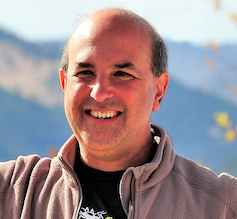 A tiny northern European country half above the arctic circle has become the latest fad in the what-should-we-do-to-fix-American-schools conversation. The country of Finland achieved this status by consistently scoring as one of the top countries on the PISA, an international test of educational attainment.
A tiny northern European country half above the arctic circle has become the latest fad in the what-should-we-do-to-fix-American-schools conversation. The country of Finland achieved this status by consistently scoring as one of the top countries on the PISA, an international test of educational attainment.
Unlike some of the other top scoring countries, though, Finland doesn’t get there by drilling students in the basics for many extra hours a day. There are no after school and weekend tutoring sessions, no reams of standards and standardized testing, no competition between schools (and no private schools). According to an interesting if a little starry-eyed recent documentary exploring Finland’s education system (The Finland Phenomenon), the students don’t even do much homework. Yet despite going against the grain compared to the direction the U.S. and many other countries have headed, Finland students seem to be among the best at just the kinds of standardized tests that the Fins don’t even use for themselves. All indications are they have found an alternative path for K-12 education that works really well, and we might have something to learn from them.
One reason that the film and other commentators have given for Finland’s educational success is the professional respect accorded teachers. Being a Finnish teacher is apparently a highly coveted job, so their education schools can select only the best students. This is in contrast to the U.S. where teaching is too often a fallback profession for college students who have not found a passion for something else. After training these future teachers to a high standard, the Finnish system appears to give them free reign to teach rather than constricting them to following standards and judging them on test results. I think this is the same psychology that we try to use with our labs at SimBio – if you let people (be it students doing an open-ended virtual lab or professionals doing their job) have room to explore and carry out their own ideas, they will often be more inspired, try harder, and go farther.
What prompted me to write this post, though, was an article I recently read in The Atlantic that posited another reason why Finland’s system is so good. Relying heavily on interviews with Pasi Sahlberg from the Finnish Ministry of Education, who has just written a new book on Finland’s schools, the article claims that underlying Finnish success is a goal of equality. Finland decided that giving all students an equal education, and using that to even out social inequalities in the country, was a bedrock principle on which they would reform their education system. The author speculates that this equity principle fostered much of the success of the system they developed. To me this is a really intriguing (and admirable) goal for an education system and certainly a contrast with the U.S. explicit goal of improving educational quality as measured on tests, which, paradoxically, seems not to be working at all.







